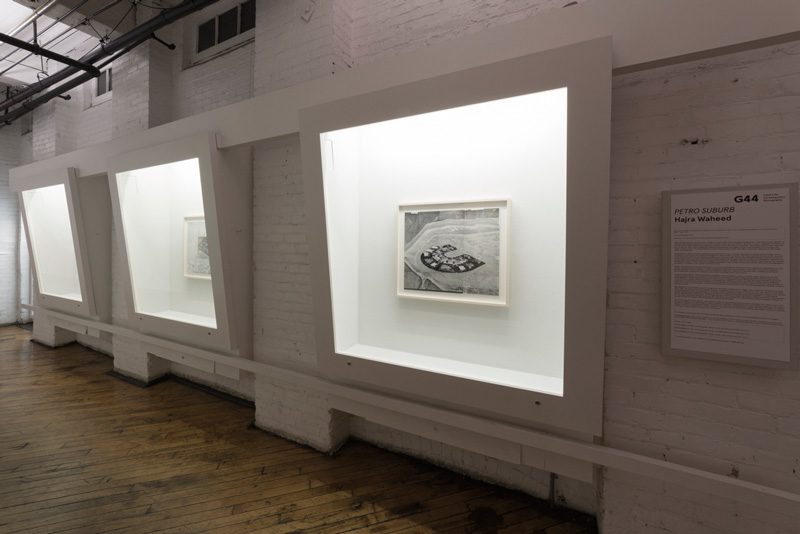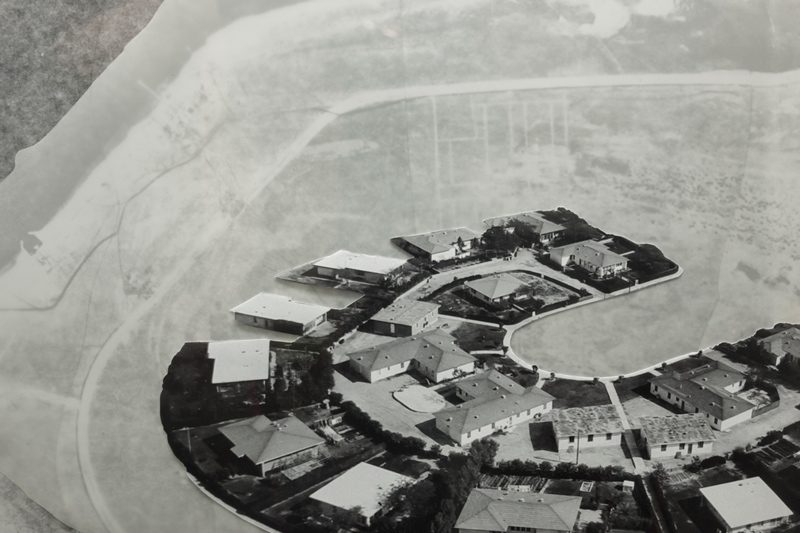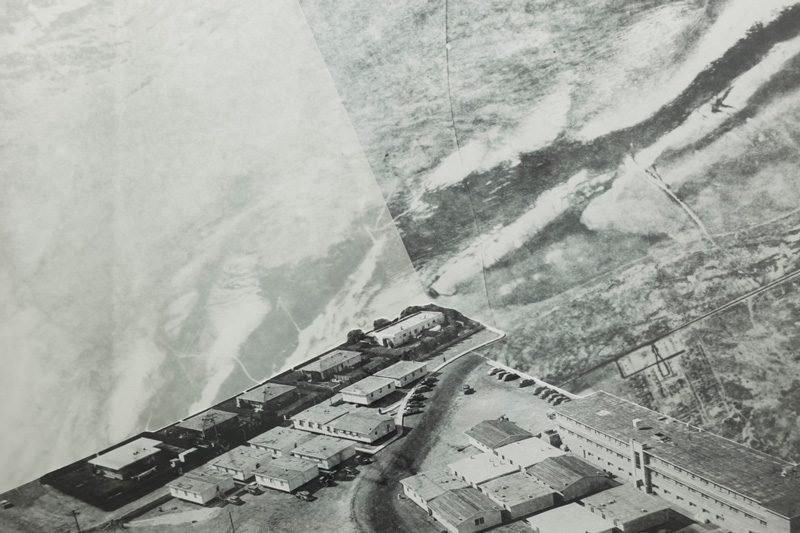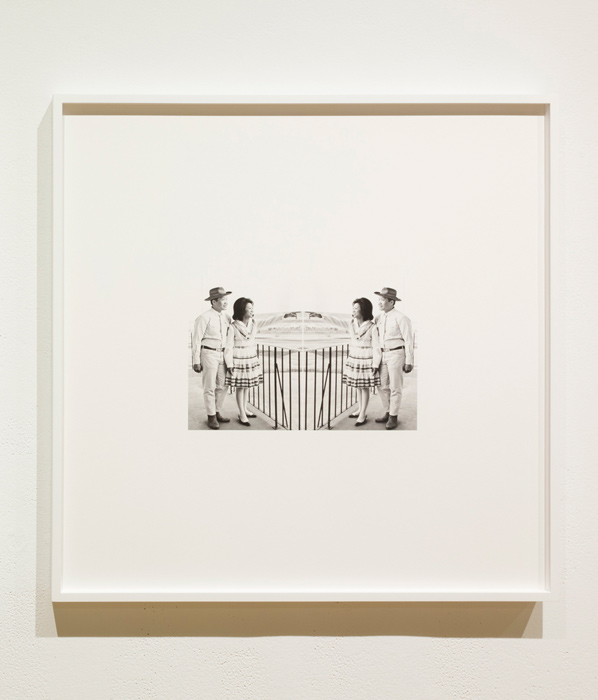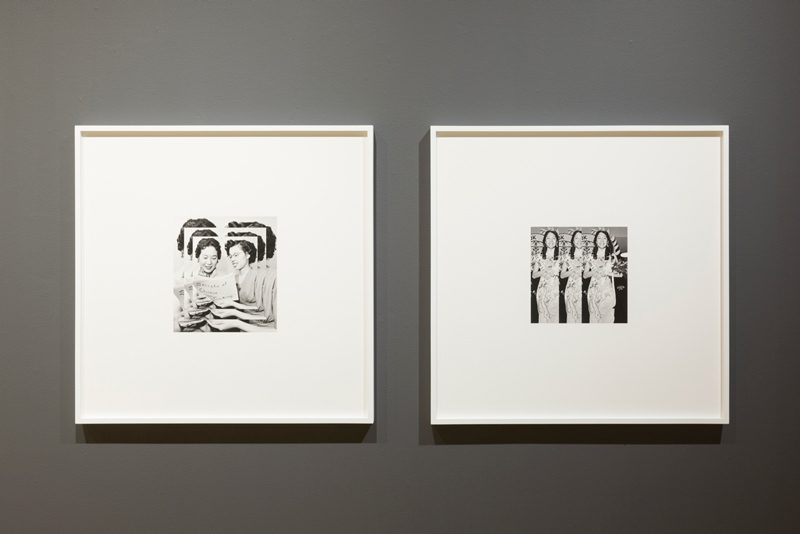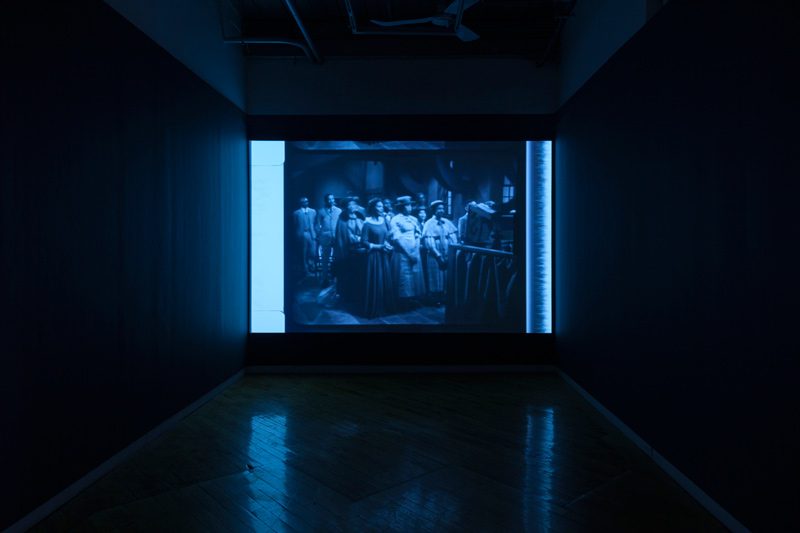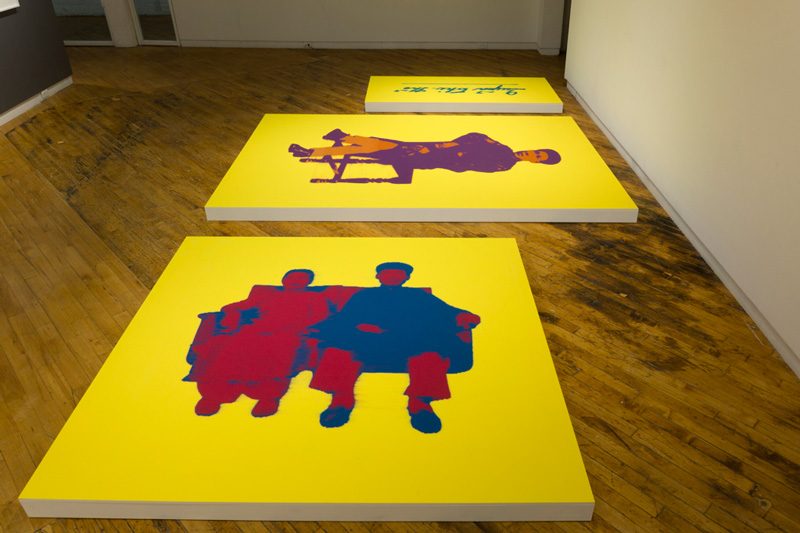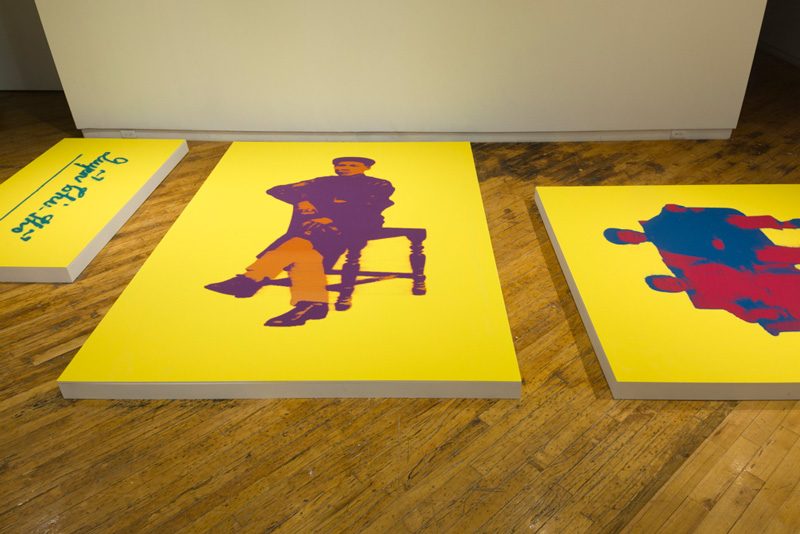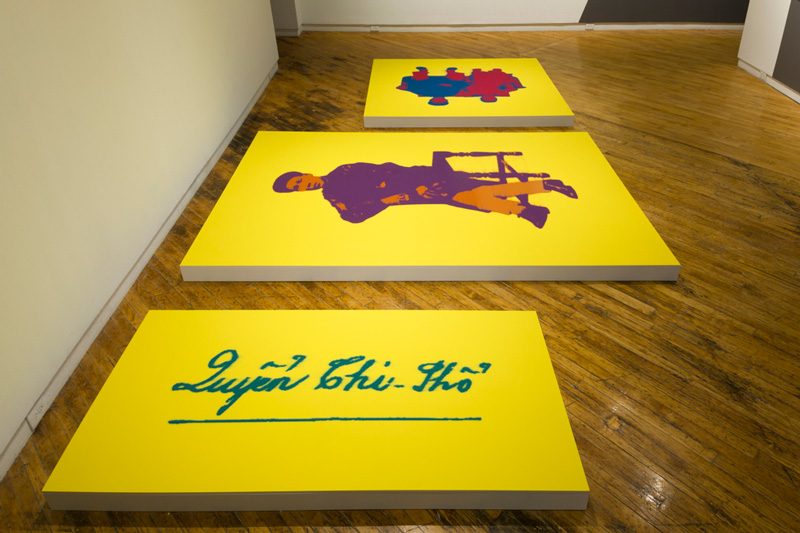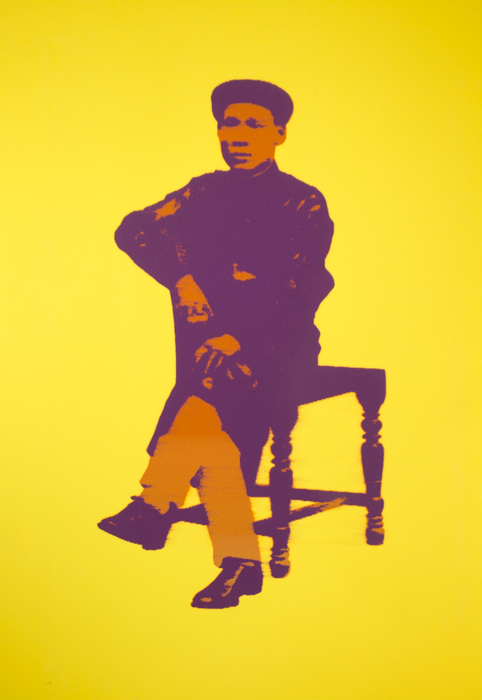Gallery 44, Toronto
May 3 – June 1, 2019
By Robert Anderson
In Developing Historical Negatives, OCAD University professor Gabrielle Moser (Photography and Belonging in the British Empire, Penn State UP, 2019) brings together artists who explore the racialized body. In our supposedly multicultural society, Moser considers the role of photography in producing a literal and metaphoric archive to justify and perpetuate the structures of colonialism, the effects reverberating throughout Canada today.
In the vitrines of Gallery 44, Hajra Waheed’s photographic collages reveal the colonialist structures and ideology of Jim Crow’s American South. The seemingly innocent development of American suburbia is actually a carefully designed strategy to divide people around racial lines, division of labour, and the utilization of surveillance technology. For 22 years, Waheed’s lived in Saudi Arabia and had firsthand experience with the longevity and implementation of these systems of control, clearly a testament to America’s uncanny ability to export their Ideology globally. Waheed’s collages evoke in this viewer the complexity of planning an escape from Alcatraz.
Morris Lum’s series Subtle Gestures recontextualizes portraits of Calgary residents, found in a folder labeled Chinese, 1950-70s era archives of a local newspaper. The original photographs evoke the racial stereotypes of ethnographic photography. But Lum turns these assumptions back on themselves using modern digital imaging. The one that works best, in my opinion, presents the original image of two Chinese residents, with the couple gazing outward to the side of the photo where the woman is pointing to the unseen (for the viewer) horizon. The man wears a country western style hat and the woman wears a country style fringe skirt. Paradoxically, this seems to signify ‘otherness’ while validating a belief in the homogeneous nature of Western culture to the presumably Canadian reader. Cleverly, Lum digitally prints a ‘mirror’ image beside the original image, so the woman now points back at herself. This visually articulates the self-referential nature of photographic archives and Lum, throughout his series, emphasizes the materiality and ‘construction’ of archival knowledge.
Krista Belle Stewart uses video to explore her Sylix Nation heritage, returning to the land her mother left her. The artist’s plays a recording for her family members of her great grandmother’s recorded singing in her native language. Stewart live streams the broadcast, using current day technology. The video strongly evokes a sense of place but paradoxically, resonates with a sense of displacement, a way lost or violently taken away.
Would anyone seriously make a documentary film today about Black Canadians and call it The Promised Land? Apparently our state broadcaster the CBC thought it was a great idea in 1963 and did just that. Deanna Bowen presents a video of the original 16mm film; ostensibly, the CBC production documents, through first person narratives and Gospel music, a small congregation of a Black church coming from the southern US to settle in Edmonton at the turn of the century. This idealized representation negates any mention of the violence and segregation they faced in their new homeland. Bowen uses various techniques to subvert the referential status of the original CBC film: visualizing a sound modulator that oscillates with the voices in the film, edge code numbers along the side of the film, and the familiar docking station at the bottom of a Mac computer. The Black Canadian identity, Bowen argues, has always been concealed by colonialist structures and constructed by the state apparatuses.
The most visually dynamic work in Developing Historical Negatives belongs to Jacqueline Hoàng Nguyễn. In Presence in Absentia, bright and intensely colour images are created with coloured sand, which lay on wood panels on the floor of the gallery. Strongly evoking the imagery of mandalas, the artist has transposed family photographs handed down by her great-grandfather, taken over his lifetime throughout Indochina. These sand paintings are not only a tribute to the artist’s family, but to her culture and way of learning: stories told to her growing up by her great-grandfather. Much like the temporality that defines Nguyễn’s nomadic culture, these sand paintings will erode and be swept away when the Gallery 44 show ends.
Moving from colonialist histories to the personal and the profound, Developing Historical Negatives is a coherent and engaging show, steeped in the scholarship of curator Moser and her synthesis of contemporary theorists (the show’s title is taken from a quote by colonial anthropologist Ann Laura Stoler). Here in this show, the artists offer transparency and process to replace structures of representation and conflict in the metaphoric ‘darkroom.’ And even though facing the challenges and violence at the core of Canada’s modern day colonialist society, these artists remain clearly on the side of life.
Robert Anderson has written articles and reviews on art and literature for numerous magazines. His photo-based work can be seen in his self-published chapbook The Other Side of There. As well as The Hospital Poems (BookThug, Toronto), his latest book length poem is Code 7. He holds a BFA and MA from York University, Toronto.

